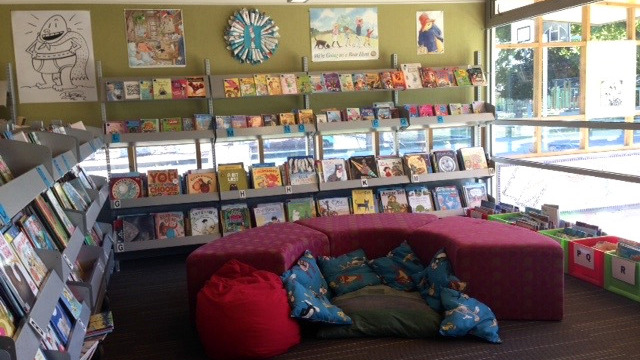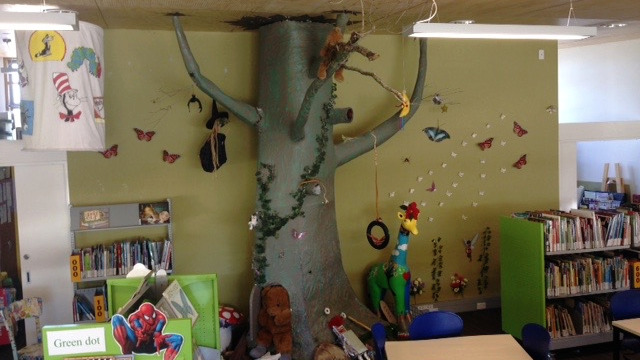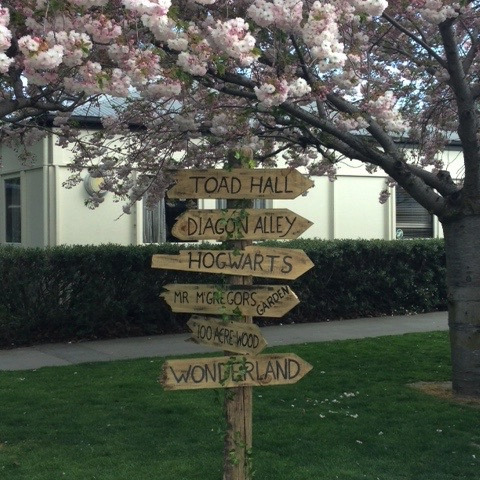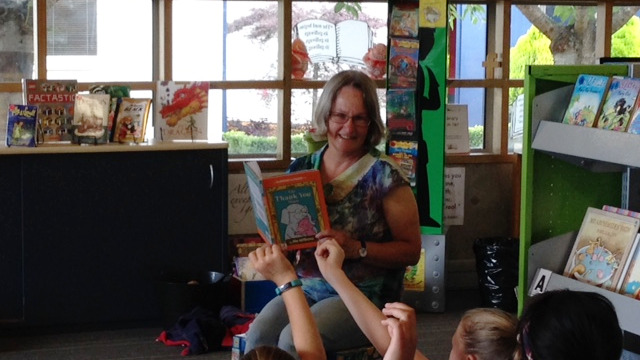New Zealand’s school librarians are passionate, engaged professionals who know how to get students of all ages and reading levels into reading. This is the first of our monthly spotlights on inspirational school librarians.
I am fortunate enough to be the librarian at Fendalton Open-Air School in Christchurch, which is for Years 1–6. I have been working here for quite some time. Since last century, in fact. I stay because I love it.
I manage the library, teacher resources, and all things books and literacy, amongst many other tasks. One of the best aspects of my job is, of course, spending the library budget buying new books.

Children’s literature philosophy
My philosophy around children’s literature is based on passion, pure and simple. Passion for the written word, passion for the art of illustrations, and passion for the belief that children’s literature is one of the most powerful tools to engage, inspire, entertain, excite, confront or challenge, and move readers into making connections between themselves and the characters they believe in.
Several years ago, I completed the Diploma in Children’s Literature at Victoria University which sadly is no longer offered. For me, this reflects the idea that children’s literature is seen as less significant than other forms of literature. I believe it is often underrated but one only needs to look around to see how strong and wonderful, how essential it really is.
Typical day?!
There is no typical day in our library. Anything can happen. Classes are in and out all day. Even though we have set times we are still flexible, so even if a class is using their time, smaller groups come to do research, use computers, and bring their laptops or iPads. I’m there to help students navigate the internet, find books, teach library skills, make good keyword searches – whatever is needed. I run a book club, or a makerspace (one lunchtime we made structures from marshmallows and spaghetti, another time we re-purposed old books into something creative).
Sometimes children pop in just to share their writing. I love how willing they are to share.
I try to catalogue books or teacher resources as quickly as I can. Sometimes I’ll read to classes, show them book trailers, give mini-lessons. There are archives to sort, student librarians to train. I might be organising an author visit one minute, then looking for a picture book on persuasive writing the next, or setting up a new display. With the library blog I might be creating a Blendspace page for a hot topic.
We have an open-door policy, so I often have parents coming in wanting help and ideas for their children’s reading.
I love that there is a randomness to the day, even when it is semi-organised.
Library set-up
Our library is quite small but it is set up so that the juniors have an area looking out on the whole school. It is bright and colourful, and houses picture books and first chapter books. We then have a middle section with all the middle and senior fiction, and then the next area is the non-fiction, computers and tables for research. We have audio books for ESOL readers and those that just love listening to stories. Bean bags and floor cushions are scattered everywhere and there are rolling stands of graphic novels, sophisticated picture books and the like. The shelves can be pulled back so that the whole library is opened up for author visits. Recently we had a community-wide space night and had robots and activities all over the floor. Flexibility is key in any library.

The centre back wall of our library houses a floor-to-ceiling tree. It was made by our caretaker and the children love it. I decorate it depending on current topics, which may last for a number of weeks. I do regular weekly or sometimes fortnightly displays on whatever comes to mind really. The start of the year will be Waitangi Day, but then it might be an author study, crafts, World Wars and so on.
Behind the back wall is another room with thousands of teacher resources, all catalogued for staff to issue. (Ha – I live in hope that they will be issued and not just taken while my back is turned. Every school librarian’s nightmare is keeping track of teacher resources.)
We have a wonderful signpost made by our caretaker just outside our library. I love how the place Wonderland points right to the library door.

The most successful reading promotion
I think the most successful reading program I have been involved with is my Year Six book club. I take a group of dedicated students who read reasonably well but don’t challenge themselves. I supply each student with a key ring and a notebook. There is no obligation to write in the notebook but I do encourage them to write at least the name of the book and author, and perhaps a quote or two from the book where the words jumped out at them. We start with the same book so I can gauge their reading comprehension, emotional attitude and reactions. From there, they have a wide selection to choose from. Many choose to read the same book. As they read each book, depending on the genre, they collect tags (simple laminated card) which they attach to the key ring. They love the little tags and feel special belonging to the club. We chat while eating lunch. We might discuss character, or I might read a sophisticated picture book and encourage them to really look at the pictures and what is perhaps not being said, or the symbolism in the choice of colour. It’s about taking the students outside their comfort zone, in a safe and supported environment.

They go away at the end of their two terms eager and excited about new authors, new topics, and with a new outlook. At the end of the year I grab a couple of support staff, and we take the whole club for an annual walk to the local kindergarten to read Christmas stories and play games with the young children. It is a wonderful community connection with books at its heart. After our trip we share a last lunch and a hug or two as they head off towards Intermediate.
I had one young boy come back with a box of chocolates one year. He had gone with his Intermediate Class to the Literature Quiz and he was so excited, he was the only person out of all the schools who knew a particular answer to a question from a certain sophisticated picture book. It was one I had read to the book club when he was at our school. The card he wrote brought a tear to my eye, so I know it is worth it and better yet, that it is working. I would love to take more groups.
Library organisations
I have been a SLANZA member for many years and absolutely love the support we get from the network of librarians. Many of us are isolated in our profession so it is so important we join groups like SLANZA or attend National Library network meetings. We all need a voice, especially with so many changes in education and the demise of many school libraries. SLANZA and National Library help us to be heard. Joining the SLANZA Facebook group is also well worthwhile. The school library listserv is another essential group to join.
Change in the New Zealand publishing environment
Over the years I have become increasingly concerned over the number of publishers that have moved overseas. As a writer, it is a huge worry as the number of options we have to submit ideas or manuscripts is limited. When writers write for the overseas market, I worry that because there is more of an international flavour required, the New Zealand voice, setting, etc. may get lost along the way.
However, many of the publishers realise how important schools and school librarians are for their business and offer free downloads, teaching notes, and competitions with schools in mind. This is wonderful and I certainly make use of their websites. I use their book trailers to promote new books and reading. More publishers are part of social media and I personally follow many of the publishers on Facebook and Twitter.
I would love to see more being published here and for children’s literature to have a higher profile and acceptance. New Zealand has some of the best children’s writers and illustrators here on our own doorstep.
The last book I recommended to all and sundry
Trying to choose one of my favourite books that I have been constantly talking about is too difficult. There are too many. A while back, I couldn’t stop talking about the Young Adult book All the Bright Places by Jennifer Niven. Oh my goodness, I sat on my back doorstep sobbing my heart out. Weeks later I was still grieving.
Last year, I was totally blown away by Small Things by Mel Tregonning, a dark, incredibly moving and haunting sophisticated graphic picture book dealing with self-doubt. Also, Brian Falkner’s Shooting Stars is a book that will stay with me for some time.
As the old adage goes, too many books and not enough time.

Desna Wallace
Desna Wallace is a school librarian, writer, reviewer and blogger. Her TBR pile of books is taller than she is. (Not hard to do). Desna lives in Christchurch with her two cats; one has a nasty temper and the other could do with a little more exercise.



